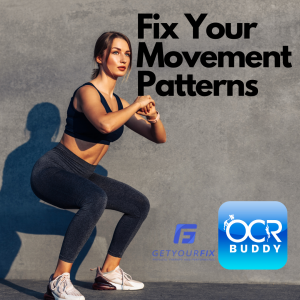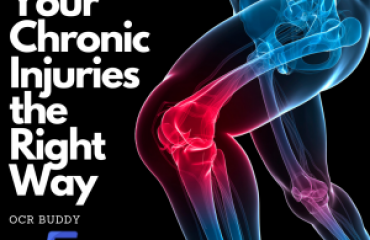 I know you have seen that person at the gym…The one that can’t get their hips down in a squat so they lean forward with their torso to counterbalance and to feel like they are deeper in the squat than they are. And that person who has a ‘stripper butt’ when they deadlift, clean, or snatch, lifting their butt up first and then elevating their torso.
I know you have seen that person at the gym…The one that can’t get their hips down in a squat so they lean forward with their torso to counterbalance and to feel like they are deeper in the squat than they are. And that person who has a ‘stripper butt’ when they deadlift, clean, or snatch, lifting their butt up first and then elevating their torso.
Perhaps that person is you.
And if you are doing that at the gym, that also means it is happening during daily activities at your home or job.
I see a lot of bad form everywhere I go and speak to a lot of people who were injured working with coaches, trainers, and clinicians who did not fix that bad form for whatever reason.
So, how do you determine if this is you? If you can answer YES to any of these questions, this is likely you:
- Do you get back pain with repetitive or heavy squats, deadlifts, kettlebell swings, or Olympic lifts?
- Do your quads get sore and tight with squatting, but you don’t feel anything in your glutes?
- Are you plateaued in the weight you can lift, unable to lift any heavier and can’t figure out why?
Now that you know the what, let’s talk about the why…
Increased stress and strain on the muscles and tendons
When you lean your torso forward in a squat or lead with your hips when pulling from the ground, the only way to get out of that position is to fire the muscles that line your spine. These muscles were not meant to work that way and especially not when lifting heavy. These muscles are meant to be stabilizers for the most part. When you repetitively fire them as ‘mover muscles’ during squats, deadlifts, or Olympic lifts, they eventually get fatigued and then tighten up, which is why you feel like they are on fire every time you move for the next several days (or more).
If you are moving properly with all squatting motions, you should primarily feel the glutes and quads working. With deadlifts, it is a full body movement, but during the movement you should primarily feel a combination of your glutes and hamstrings working.
Lacking power
Any time you are not moving with ideal patterns, you are required to overcome positions in which your body does not move powerfully in. This does not necessarily mean it cannot function in that position, but it does mean you will not be as strong in that position. If you are finding yourself in a plateau in what you are able to lift, this is a likely reason.
When you move with proper movement patterns, you put the body in positions that puts the joints in their best alignment and allows the body to use the muscles that will generate the most force. Most often, once someone fixes how they are moving, their current weights go up easier and they quickly hit new PRs. Something to think about if you have been working to achieve a new squat or deadlift PR.
And because I can’t ignore the foot, where the weight is on your foot matters with this as well. Being too far on your heel or too far on your toes will not allow your body to move in a way to generate the power you are looking for.
How you do one thing is how you do everything
Most times, it is never that “one movement or lift” that injured you, even though it seems like it. It is typically an accumulation of the repetitive improper and unstable movements over years that eventually trigger an injury. If you are moving with poor movements in the gym, at a time when you are consciously thinking about how you are moving, you are likely moving the same way (or worse) in your daily tasks.
Now, with that said, I do want to point out that no movement pattern in your daily life is technically a ‘bad’ movement. What makes movements ‘bad’ is the fact that you haven’t trained the body to stabilize itself in those positions or movements. Many times when working out, it is a lot of single plane forward/backward or side/side as well as very controlled, neutral spine movements. Rarely do I see people doing diagonal or rotational movements. Along with that, I don’t see people learning how to control the spine bending. The spine does bend and it is safe to bend, but you have to teach your body how to control and stabilize it.
Ultimately, here’s the deal! We live in an unknown, random world. You can never predict when you have to move quickly and you can never predict what direction you will have to move or what position your body will have to go into when those unpredictable things happen. Start to train your body to be ready and stand up to the unknown and unpredictable events so you can be as resilient and highly functional as possible!
Written by Brianne Showman. Brianne is a physical therapist and running coach with Get Your Fix Physical Therapy And Performance. Her focus is on helping athletes resolve injuries in less time by getting to the root of the problem, improving movement patterns, and incorporating proper training to help the body to move more efficiently, more powerfully, and in less injury-prone ways.









